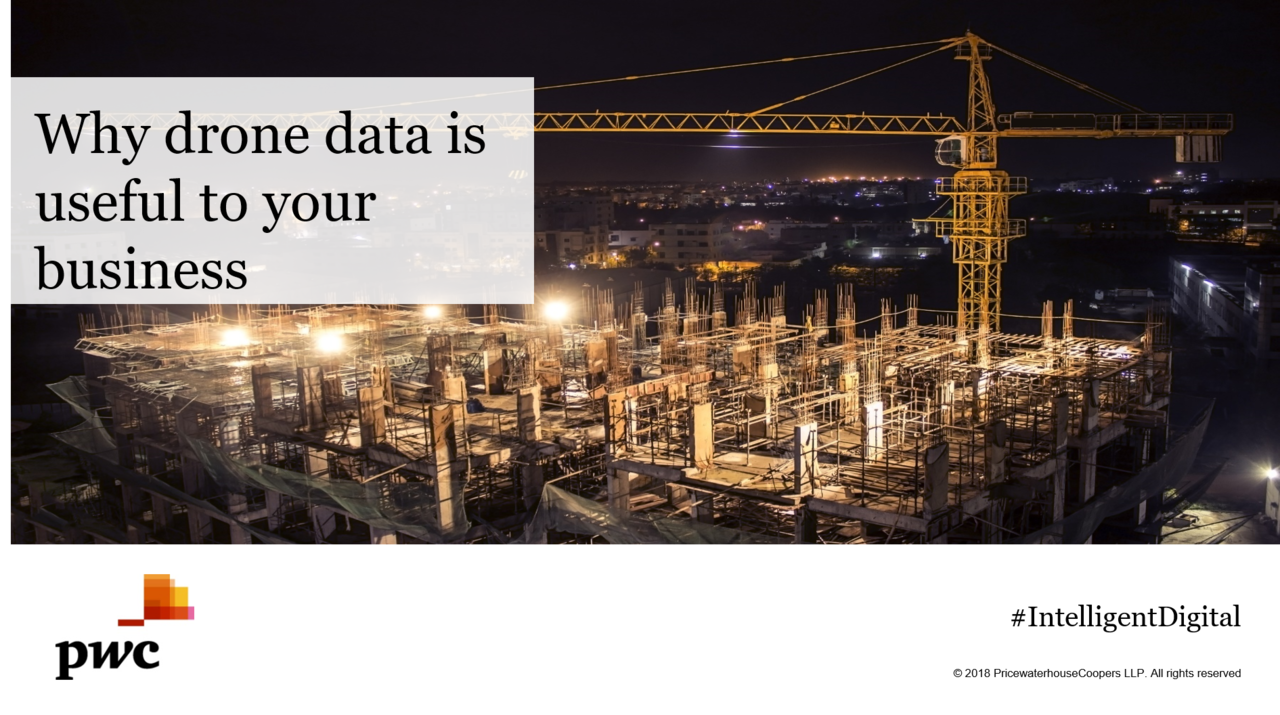
Why drone data is useful to your business
Organisations today are under immense pressure to be more efficient, innovative and ambitious in how they deliver services – objectives that are so much easier said than done. What are the strategies open to businesses, and how can new uses of technology enable these? While there can be no “one size fits all”, there are some underlying principles – one of which without doubt is being smarter about how the business uses data to achieve unique insights into the world around them and so gain and maintain that competitive edge.
Collecting data quickly and accurately from hard to reach places creates a ‘golden record’ in near real time. This dataset can make a crucial difference in managing costs, controlling risks, increasing safety and influencing outcomes. Drone data unlocks previously inaccessible insights which can then reveal completely new perspectives.
In our “Skies without Limits” report we forecast a £42 billion increase in UK GDP and £16 billion in net cost savings. But we know that for any business the picture is more nuanced. In my recent blog Verticals take-off: the major winners in the drone economy, I discussed how that uplift and those cost savings would impact on different sectors. We need to look even further than this though, because simply operating in one of those sectors doesn’t automatically mean you’ll see a benefit.
Organisations need to take a strategic approach if they want to benefit from the drone economy. Simply put, they need to understand how data can be useful to their business.
In some sectors, such as utilities where drone usage is already well established, it is easier to see how a fleet of drones could monitor and report back data that could be acted upon. However, other businesses might question how they could employ drone usage, conscious that they don’t want to be simply swept up in a wave of hype. Perhaps their business model, as is, would not benefit from drones; but by taking a deeper strategic look at their business it could be that they are sitting on a hitherto unmined seam of golden information.
As organisations of all types continue to digitise in the coming years, drones will become one of the most important sources of data and insights of the physical world and a key part of any Intelligent Digital strategy. If a business is operating in a sector that is gearing up for fast adoption, it must move quickly to avoid losing out to faster moving competitors.
Even sectors where the disruptive potential of drones is lower will not be immune to their impacts. In every industry, doing nothing is not an option.
While investment in drones may currently appear expensive, costs will decline over the coming years as drone services and the related software become more standardised and commoditised. To make the most effective use of drones, organisations will need to develop a data-driven culture and ensure that drone-captured data is seamlessly integrated with other digital services. It’s important that drones adoption is considered at a strategic rather than tactical level.
In the future, the use of drones will be driven by AI routines that launch drones to collect information based on a particular trigger event, be it periodicity or a big data event. Drones will fly autonomously and the data captured will be analysed by AI. Actions may then be launched using the appropriate combination of autonomous robotics.
Talent requirements will also change, with greater need for data scientists and robotics engineers. And there will be an increase in the value of human skills that can’t be replicated by machines, such as creativity, leadership, problem-solving and emotional intelligence. This is the balance of business understanding with technology innovation and human insight.
It is the data acquired by the sensors attached to the drones that represents the real value of drones to organisations. The benefits are realised by taking this data, and then processing, analysing and interpreting the results within the existing business environment and processes, thus enabling business insights to be generated.
Helping Organisations Get More Women into the Most Senior Roles by Recruiting, Retaining and Developing Women, Creating a Safe and Fair Culture for All | On Fire Leadership | Leadership Progs | 1:1 Coaching | Workshops
4ySo interesting thank you for sharing
Original Architect of EyA - The Platform Readying the World for a Radical Change. Redefining DLT as a Full Stack Platform. Now Co-CEO and President of EyA Evolve, the Innovation Hub of EyA
5yAnna Plaster Drue Bremner Similar to our discussions...
Systems Engineer
5yHowever how does it fit in with current working practices and legislation?
People & Culture Director, The Meliore Foundation
5yVery interesting perspective on the use of drones in an increasingly digitized economy.
It is indeed!